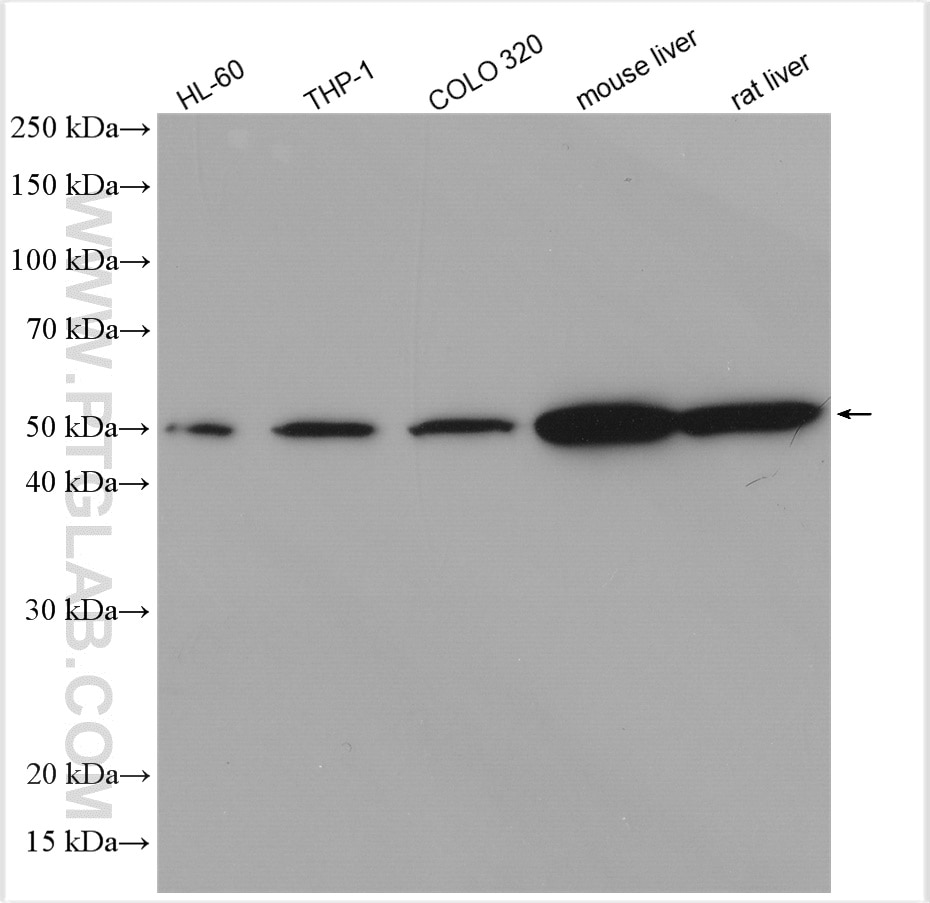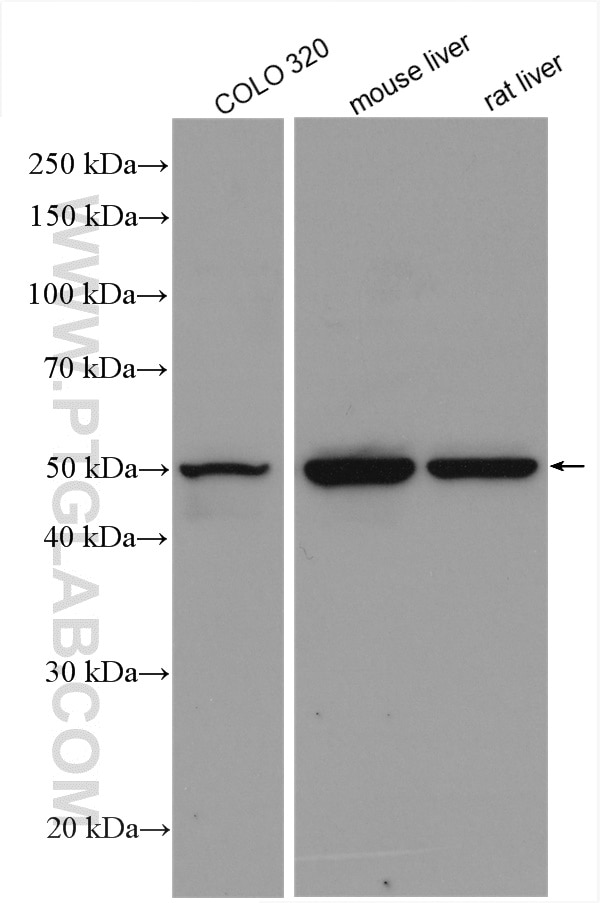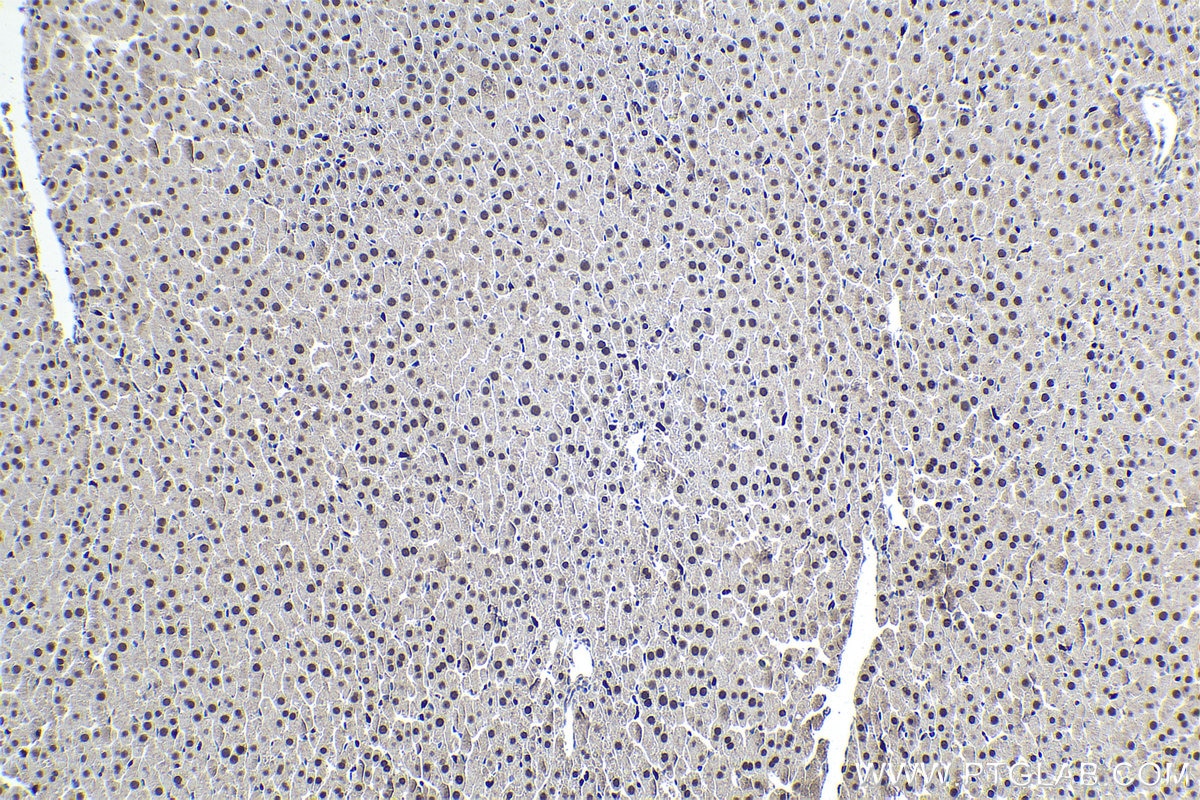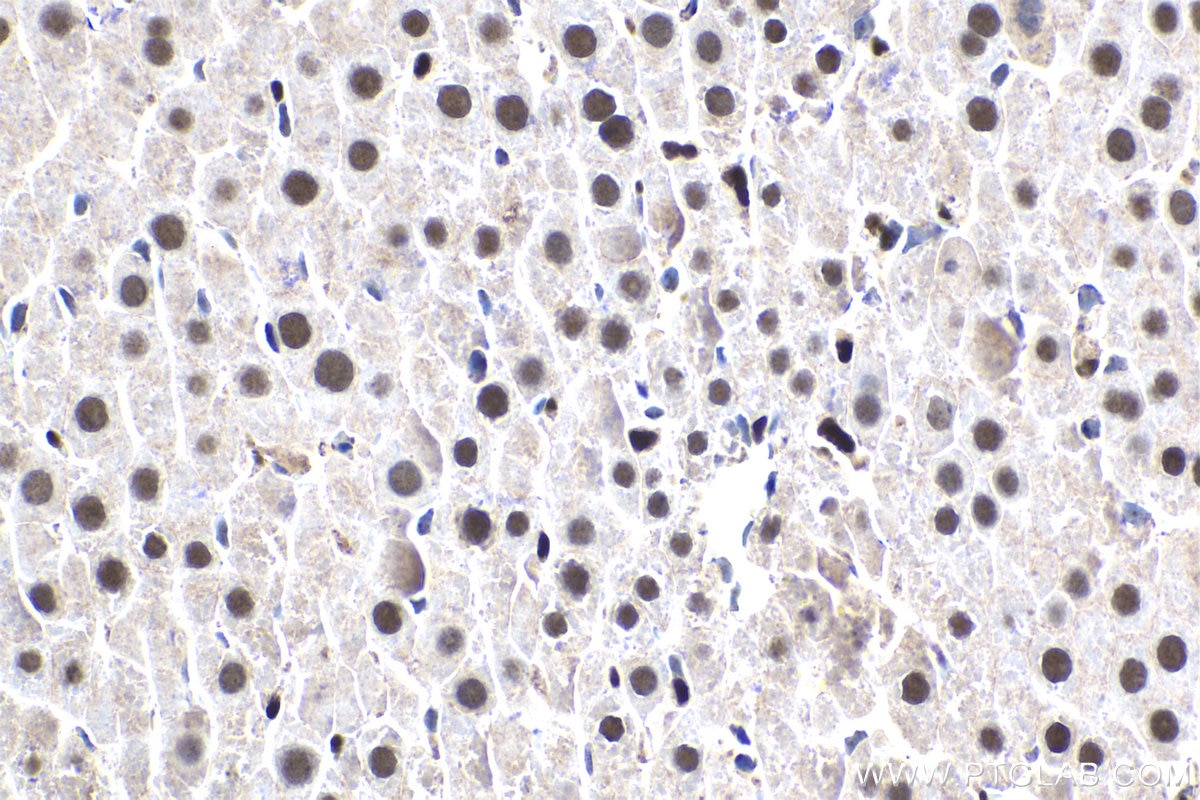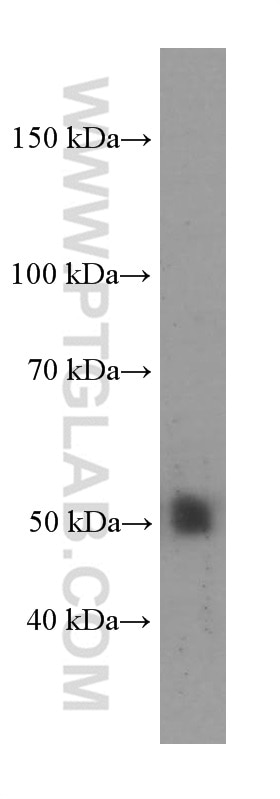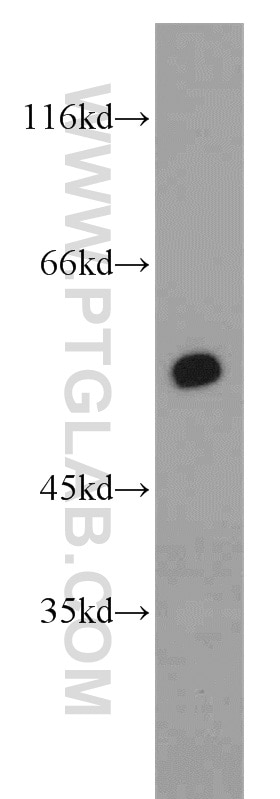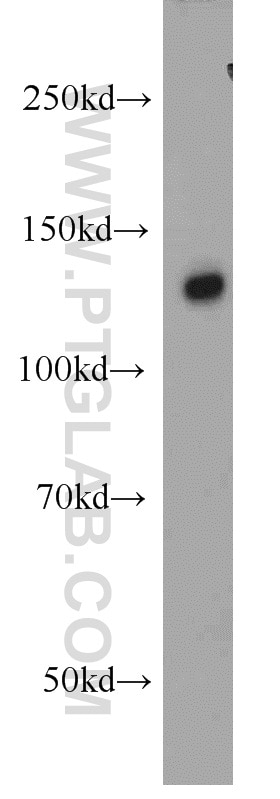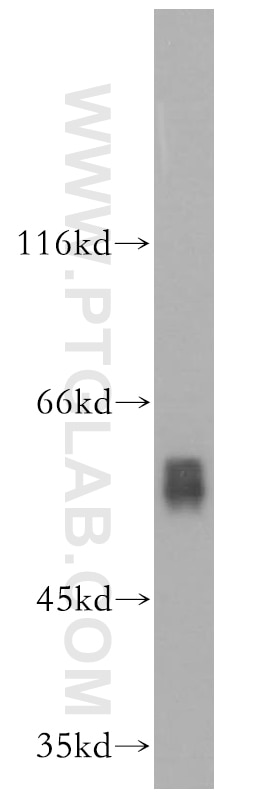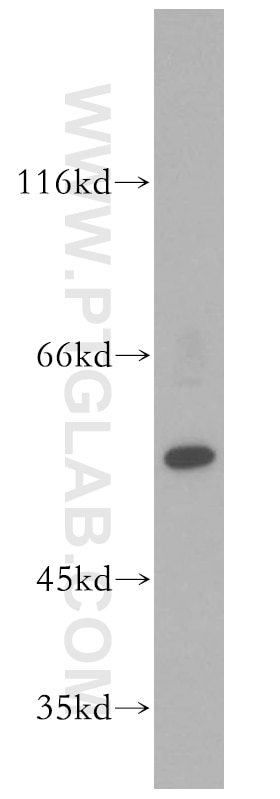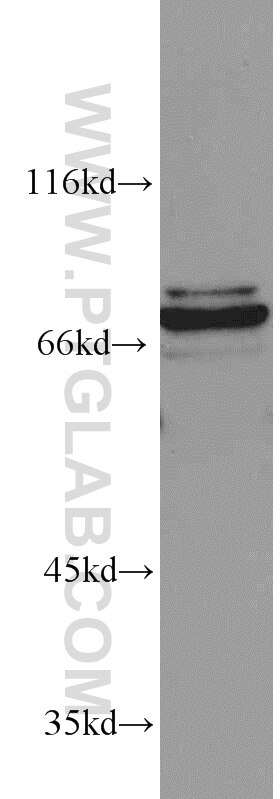- Phare
- Validé par KD/KO
Anticorps Polyclonal de lapin anti-NR1H3
NR1H3 Polyclonal Antibody for WB, IHC, ELISA
Hôte / Isotype
Lapin / IgG
Réactivité testée
Humain, rat, souris et plus (1)
Applications
WB, IP, IF, IHC, ChIP, ELISA
Conjugaison
Non conjugué
N° de cat : 14351-1-AP
Synonymes
Galerie de données de validation
Applications testées
| Résultats positifs en WB | cellules HL-60, cellules COLO 320, cellules THP-1, tissu hépatique de rat, tissu hépatique de souris |
| Résultats positifs en IHC | tissu hépatique de rat, il est suggéré de démasquer l'antigène avec un tampon de TE buffer pH 9.0; (*) À défaut, 'le démasquage de l'antigène peut être 'effectué avec un tampon citrate pH 6,0. |
Dilution recommandée
| Application | Dilution |
|---|---|
| Western Blot (WB) | WB : 1:2000-1:10000 |
| Immunohistochimie (IHC) | IHC : 1:500-1:2000 |
| It is recommended that this reagent should be titrated in each testing system to obtain optimal results. | |
| Sample-dependent, check data in validation data gallery | |
Applications publiées
| KD/KO | See 10 publications below |
| WB | See 81 publications below |
| IHC | See 5 publications below |
| IF | See 3 publications below |
| IP | See 1 publications below |
| ChIP | See 1 publications below |
Informations sur le produit
14351-1-AP cible NR1H3 dans les applications de WB, IP, IF, IHC, ChIP, ELISA et montre une réactivité avec des échantillons Humain, rat, souris
| Réactivité | Humain, rat, souris |
| Réactivité citée | rat, Humain, porc, souris |
| Hôte / Isotype | Lapin / IgG |
| Clonalité | Polyclonal |
| Type | Anticorps |
| Immunogène | NR1H3 Protéine recombinante Ag5697 |
| Nom complet | nuclear receptor subfamily 1, group H, member 3 |
| Masse moléculaire calculée | 50 kDa |
| Poids moléculaire observé | 45-50 kDa |
| Numéro d’acquisition GenBank | BC041172 |
| Symbole du gène | NR1H3 |
| Identification du gène (NCBI) | 10062 |
| Conjugaison | Non conjugué |
| Forme | Liquide |
| Méthode de purification | Purification par affinité contre l'antigène |
| Tampon de stockage | PBS avec azoture de sodium à 0,02 % et glycérol à 50 % pH 7,3 |
| Conditions de stockage | Stocker à -20°C. Stable pendant un an après l'expédition. L'aliquotage n'est pas nécessaire pour le stockage à -20oC Les 20ul contiennent 0,1% de BSA. |
Informations générales
NR1H3, also known as LXRA, is a liver X receptors, which form a subfamily of the nuclear receptor superfamily and are key regulators of macrophage function, controlling transcriptional programs involved in lipid homeostasis and inflammation. It's also a ligand-activated LXRs and forms heterodimers with retinoid X receptor, then participates in regulating expression of target genes containing LXR response elements. NR1H3 exists some isoforms with MV 51 kDa and 43-45 kDa.
Protocole
| Product Specific Protocols | |
|---|---|
| WB protocol for NR1H3 antibody 14351-1-AP | Download protocol |
| IHC protocol for NR1H3 antibody 14351-1-AP | Download protocol |
| Standard Protocols | |
|---|---|
| Click here to view our Standard Protocols |
Publications
| Species | Application | Title |
|---|---|---|
Nat Commun p21-activated kinase 4 suppresses fatty acid β-oxidation and ketogenesis by phosphorylating NCoR1 | ||
Br J Pharmacol Functional interplay between LXR and AMPKα inhibits atherosclerosis in apoE deficient mice - A new anti-atherogenic strategy. | ||
Theranostics Encapsulation of LXR ligand by D-Nap-GFFY hydrogel enhances anti-tumorigenic actions of LXR and removes LXR-induced lipogenesis. | ||
EMBO Rep Lin28 enhances de novo fatty acid synthesis to promote cancer progression via SREBP-1. | ||
Food Res Int Cabernet sauvignon dry red wine ameliorates atherosclerosis in mice by regulating inflammation and endothelial function, activating AMPK phosphorylation, and modulating gut microbiota | ||
Br J Pharmacol Targeting macrophage liver X receptors by hydrogel-encapsulated T0901317 reduces atherosclerosis without effect on hepatic lipogenesis. |
Avis
The reviews below have been submitted by verified Proteintech customers who received an incentive forproviding their feedback.
FH K (Verified Customer) (06-10-2021) | works good in rat and human cells form western blotting.
|
